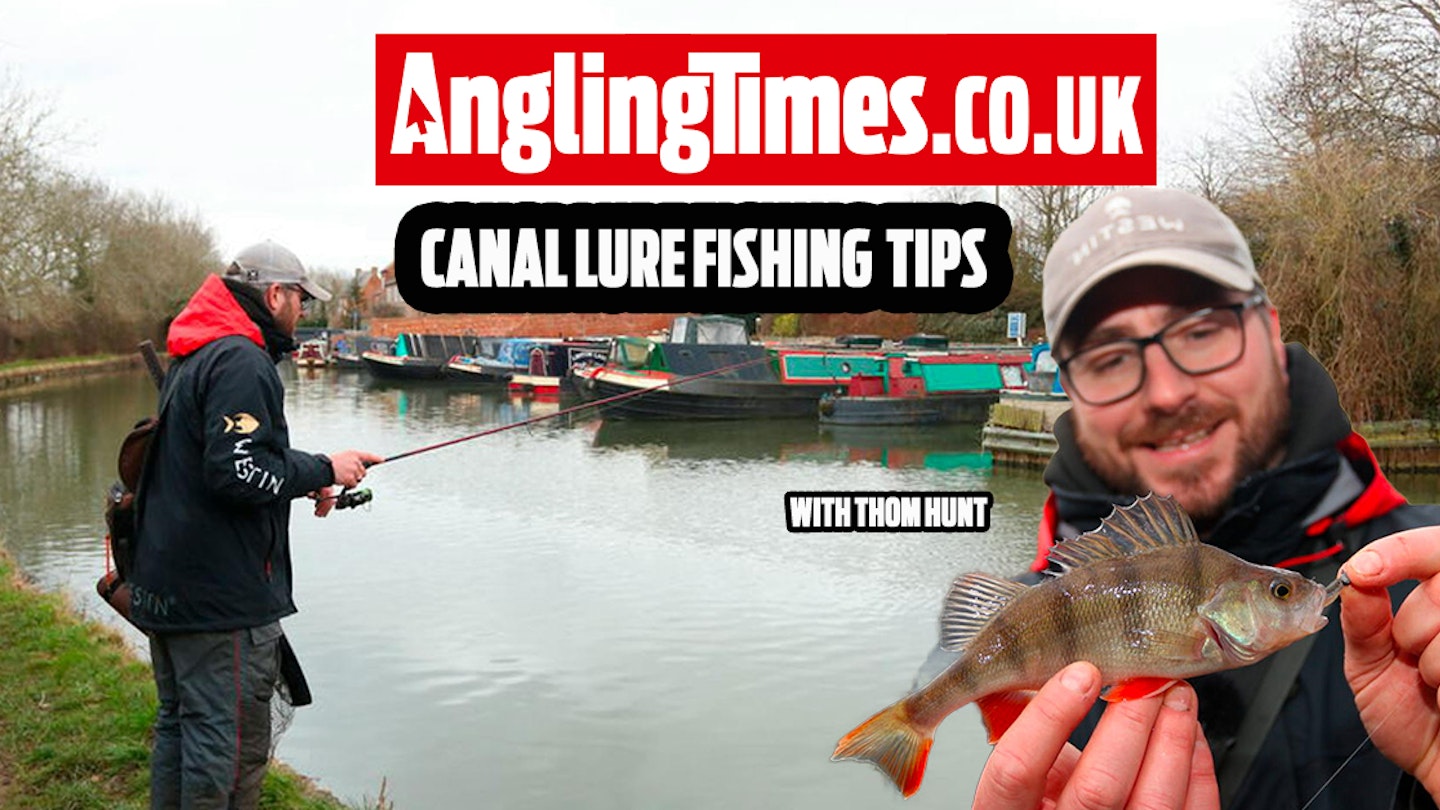Britain's canals may have fallen from favour with many anglers down the years, but for lure fishing fans in search of lots of bites they’re a superb resource, and packed with potential.
Unlike many modern styles of fishing that require a mountain of tackle and expensive day tickets, light lure angling is supremely cheap and accessible.

Everyone has a canal within easy striking distance, and most require just a low-cost day or season permit to open up many miles of brilliant sport targeting perch, zander and pike.
Once you have grabbed some basic beginner lure fishing kit, including a tackle box full of the best fishing lures, here's how you need to go about fishing them...

Target structure
Perch are ‘structure addicts’, so target any bridges, canal boats, weedbeds or overhanging trees/bushes. These areas are important not only on canals but on rivers and lakes too. They provide these predators with cover, where they can hide themselves away until an unsuspecting prey fish swims past. Don't be surprised if you find pike and zander in these areas too. Road bridges in particular are a massive draw for silverfish species, as diving predatory birds are less likely to be found in these spots.

Travel light
You can carry everything you need on your back. Keep moving – half-a-dozen casts in each swim will be ample. You will find that if the fish are there, you will get interest on the first or second cast. Lure fishing is all about searching as much water as possible and finding those hungry fish. Some days they might not be feeding, others they might be ravenous, so even if you lure fish your stretch regularly, make sure to have a couple of casts in almost every area.
HAVING THE BEST FISHING BOOTS WILL KEEP YOUR FEET COMFORTABLE WHEN COVERING THE MILES.

Take a selection
Carry different lure sizes and colours, plus jig heads. Some work better than others in certain water conditions. The best perch lures can be anything on the day, from tiny micro jigs to larger plugs and spinners. Try to test the visibility of your lures in close and judge by eye which colour the fish will be able to see best in the conditions. Don't forget to vary your retrieve either. Mix things up with the pace and number of jigs you give the lure.
FOR MORE ADVICE ON LURE FISHING, CHECK OUT THIS EXPERT TIPS & TACTICS ARTICLE.

Don’t ignore margins
The biggest fish can often be found directly under your feet, especially in coloured water, so always start there. This is the easiest to fish spot too for a number of reasons, but mainly because of the maximum control you have on the lure. If the fish are being cautious you can really slow things down and slowly jig every inch of the margins to entice a take.

Small is best
5cm-long lures that mimic fry are great for perch and zander. With jig heads, use 1g of weight for every foot of water. Go too heavy and your lure won't flutter down naturally to the bottom when jigged, go too light and you will be jig fishing in mid-water or even just under the surface. If you are finding snagging up a problem, try to go a bit lighter in an attempt to easily bounce over any bottom debris. You will find a retrieve that is best for the weight you are using after time.
THERE ARE DIFFERENT WAYS OF RIGGING YOUR JIGS. FIND OUT MORE IN THIS TACTICS ARTICLE.

Use balanced tackle
A 2000-sized reel with 10lb braid matches perfectly with a 6ft-7ft lightweight rod with a casting rating of under 10g. Canal fishing is more about finesse over brute force and power. This tackle will still land decent pike and zander when used correctly, but will fool far more perch than heavier outfits will.
Give these six tips a go and have fun on your next canal fishing trip!


This page is a free example of the amazing content Angling Times Members get every single week. Becoming an Angling Times Member gives you access to award-winning magazine content, member rewards, our back issue archives, bonus content and more! Join our fishing community and find out more today!
